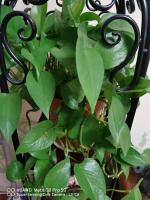Can You Graft a Broken Tomato Plant Back Together?
It’s heartbreaking to see a well-nurtured tomato plant get broken or damaged, especially after months of hard work. If you’re wondering whether you can graft a broken tomato plant back together, the answer is yes – but it isn’t that simple.
What is Grafting?
Grafting is a horticultural technique used to fuse two or more plant parts. The two parts are the scion (the top part of a plant) and the rootstock (the bottom part). The successful grafting of one tomato plant onto another may produce a robust plant that bears the fruit characteristics of both plants.
Grafting has become an essential technique that farmers and gardeners use to produce hybrid plants or produce plants that are resistant to pests, diseases, or environmental changes.
How to Graft a Broken Tomato Plant?
Although grafting is a simple technique, grafting a broken tomato plant back together is a bit tricky. Here’s how to do it:
Identify the broken parts of the tomato plant, ensuring that the scion and the rootstock are both intact.
Using a sharp knife, cut the broken parts and peel back the bark, getting down to the green layer beneath.
Place the scion and rootstock together, making sure that the cambium, the inner layer that carries nutrients, is touching.
Using a grafting clip, a piece of tape or a rubber band, tightly and securely attach the two parts together.
Once attached, protect the grafting point with parafilm or a grafting wax.
Water the plant as needed and keep an eye on it, providing support as necessary.
Factors Affecting a Successful Graft
Although grafting can be successful, some factors can affect its outcome. These factors include:
Moisture level – grafting should be done in moist soil for the plants to get enough water and nutrients.
Temperature – timing is crucial when grafting. It’s best done during the graft union’s growing season, when both the rootstock and the scion are actively growing.
Cultivar compatibility – not all tomato plants are compatible for grafting, so it’s vital to choose two compatible plants.
Grafting methods – there are different grafting methods used for different types of plants. Choosing the right method for your tomato plants can help ensure a successful grafting process.
Conclusion
Grafting a broken tomato plant back together can be a cost-effective way of saving the plant instead of starting the process again. However, grafting takes time, skill, and patience. To increase your chances of success, you may want to consider consulting an experienced farmer or gardener for guidance.
Finally, prevention is always better than cure. You can prevent damage to your tomato plants by providing adequate support and protection, avoiding over-fertilization, and managing pests and diseases.

 how many times do yo...
how many times do yo... how many planted tre...
how many planted tre... how many pine trees ...
how many pine trees ... how many pecan trees...
how many pecan trees... how many plants comp...
how many plants comp... how many plants can ...
how many plants can ... how many plants and ...
how many plants and ... how many pepper plan...
how many pepper plan...































